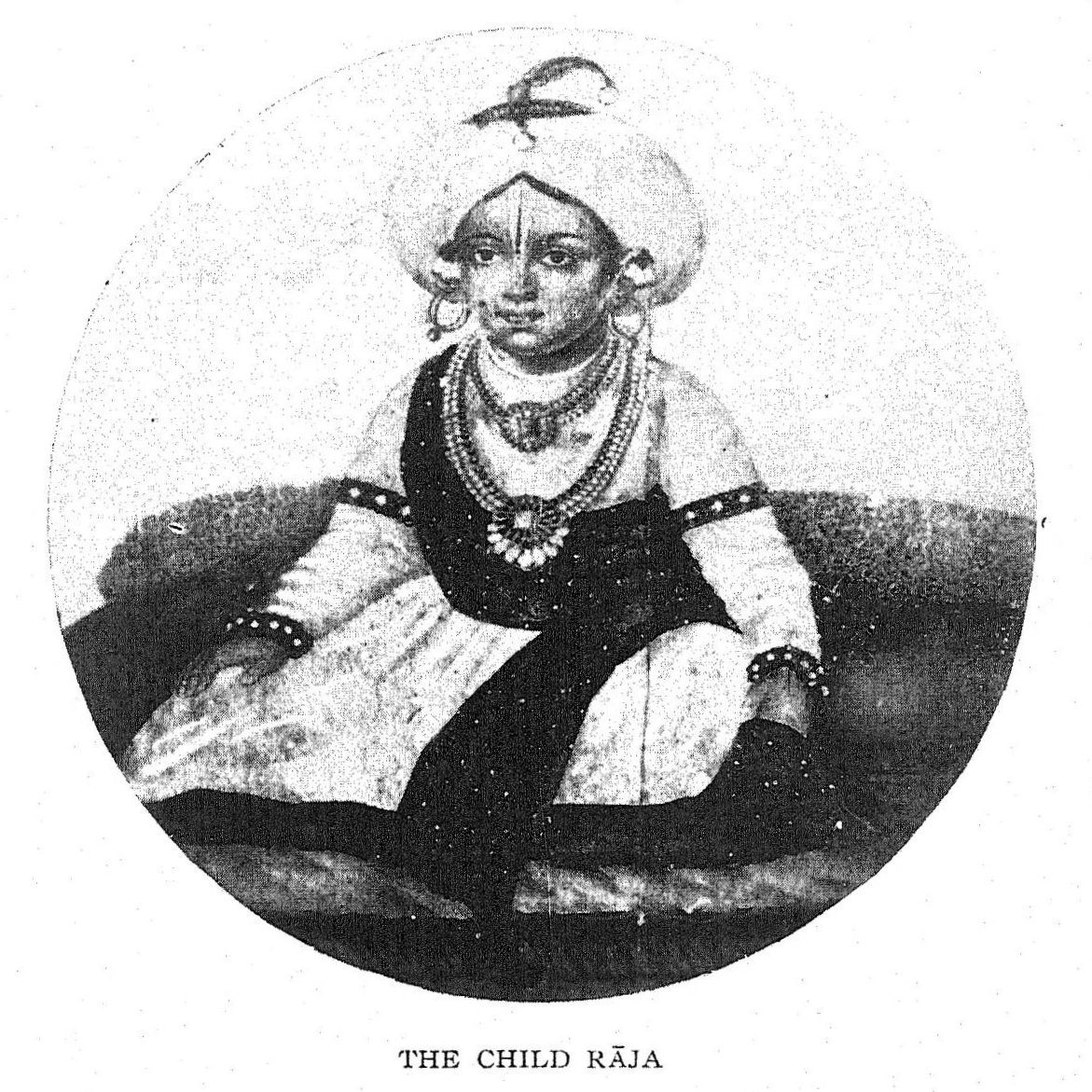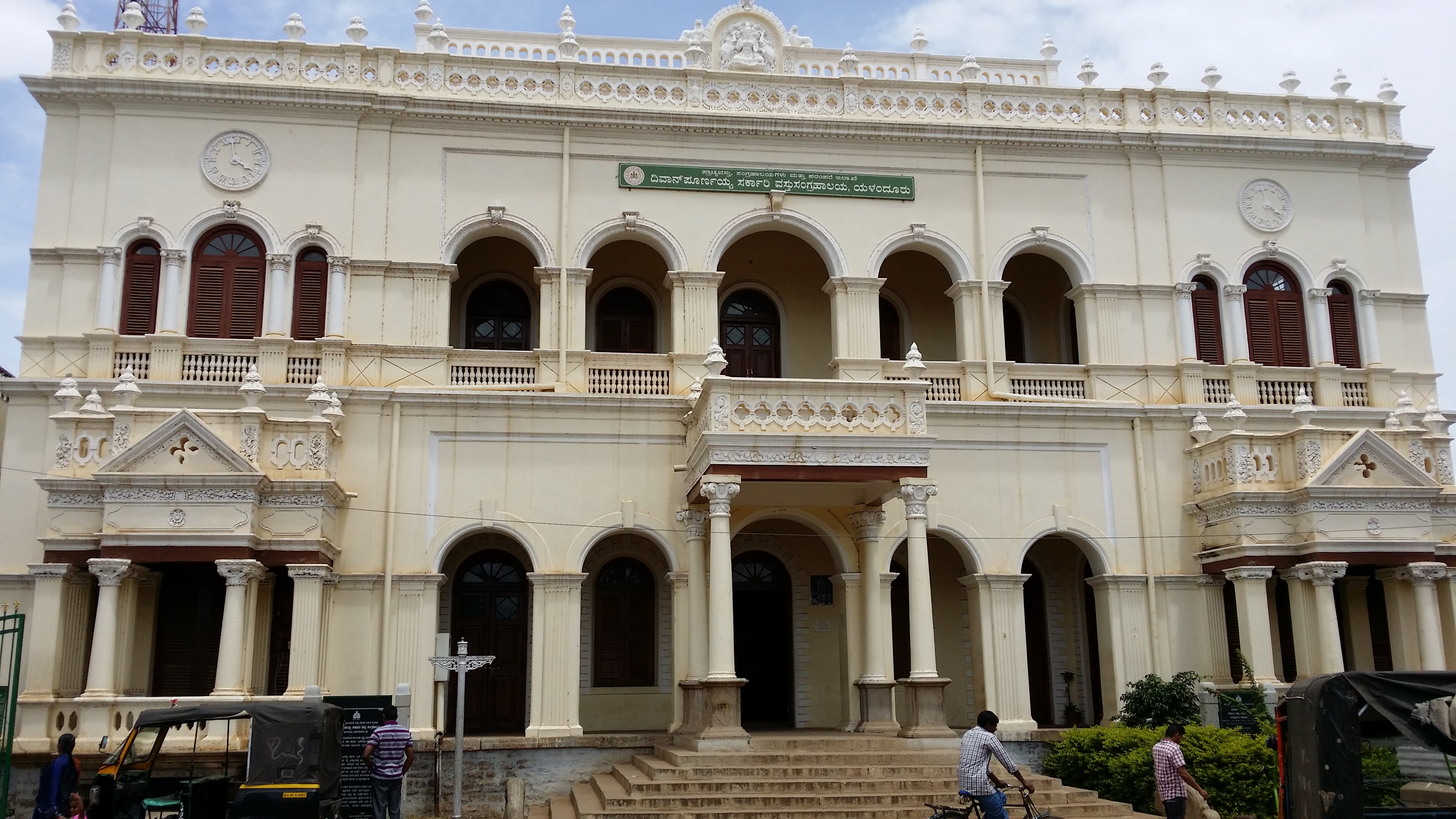|
Bargir Bakshi Balaji Rao
Bargir Bakshi Balaji Rao was the second Diwan of Mysore from April 1811 to January 1812 to Maharaja Krishnaraja Wodeyar III. Bakshi Balaji Rao was the immediate successor to Purnaiya and was succeeded by Savar Bakshi Rama Rao in February 1812. Before being appointed as the Diwan, Bakshi Balaji Rao served as Karnik under Haidar Ali and Tipu Sultan at Devanahalli and Madhugiri and later was promoted as Bakshi. He was also the shanubhog of Kysapura, Doddaganagavadi, Ibbalikehalli, Chowdaeshwarei Halli, Yerehalli, Arehalli, and other surrounding villages of Closepet (Ramanagara). Later he became the Prime Minister of Mysore Kingdom The Kingdom of Mysore was a geopolitical realm in South India, southern India founded in around 1399 in the vicinity of the modern-day city of Mysore and prevailed until 1950. The territorial boundaries and the form of government transmuted su .... References {{reflist Diwans of Mysore ... [...More Info...] [...Related Items...] OR: [Wikipedia] [Google] [Baidu] |
Diwan Of Mysore
The dewan of Mysore (sometimes spelled diwan) was the ''de facto'' chief executive officer of the Government of Mysore (now Government of Karnataka), ''ex officio'' chairman of the Dewan's Council (now Cabinet), and the prime minister and royal adviser to the maharaja of Mysore. The role evolved in title and duties since the foundation of the fiefdom of Mysore in 1350 and its proper reformation into a kingdom in the following centuries until the kingdom's full abolishment in 1950. With the constitution of India into a republic in 1950, the position was replaced by Chief Minister of Mysore (later renamed Chief Minister of Karnataka). From offering minor political advice to the monarch as ''amatya'' (Sanskrit for minister) like in the Vijayanagara Empire to later acting as a major military chieftain as ''dalvoy'' (Kannada for military chief) like in other southern kingdoms to being the head of the government as ''dewan'' (Persian/Urdu for accountant or chief adviser) like in t ... [...More Info...] [...Related Items...] OR: [Wikipedia] [Google] [Baidu] |
Krishnaraja Wadiyar III
Krishnaraja Wodeyar III (14 July 1794 – 27 March 1868) was an Indian king who was the twenty-second Maharaja of Mysore. He ruled the kingdom for nearly seventy years, from 30 June 1799 to 27 March 1868, for a good portion of the latter period of which he was merely a nominal ruler. He is known for his contribution and patronage to different arts and music during his reign. He was succeeded by his biological grandson and adopted son, Chamarajendra Wadiyar X. Early years Krishnaraja Wodeyar III was born at Srirangapatna to Maharaja Chamaraja Wadiyar IX and his first wife, Maharani Kempananjammani Devi.Annals of The Mysore Royal Family Part-1: A publication by the Royal Family of Mysore: 1916 Maharani Lakshmi Devi, his adoptive grandmother, played a major role in the education and upbringing of her adopted grandson, Krishnaraja Wodeyar III, and was instrumental in his ascent to the throne.Rajakaryaprasakta Rao Bahadur (1936), p265 Since the insurrection of Mysore and stormi ... [...More Info...] [...Related Items...] OR: [Wikipedia] [Google] [Baidu] |
Purnaiah
Krishnacharya Purnaiah (1746 – 27 March 1812), popularly known as Dewan Purnaiah, was an Indian administrator, statesman, and military strategist who served as the first dewan of Mysore from 1782 to 1811. He was instrumental in the restoration of the rule of the Kingdom of Mysore to the Wadiyar dynasty. After the death of Tipu, he continued to advice Lakshmi Devi, the queen regent to the newly installed monarch Krishnaraja Wodeyar III. Purnaiah was known for his accounting skills, prodigious memory, and proficiency in several languages. He was also a wartime military commander while serving under Tipu. After Tipu's defeat, he served as the dewan to Krishnaraja Wodeyar III. Wodeyar was educated and mentored by Purnaiah in the latter's early years . Early life Krishnacharya Purniah was born in 1746. He was fluent in Kannada, Marathi, Sanskrit, and Persian. He understood English but could not read or write the language. At the age of eleven, Purnaiah lost his father and ... [...More Info...] [...Related Items...] OR: [Wikipedia] [Google] [Baidu] |
Haidar Ali
Hyder Ali (''Haidar'alī''; ; 1720 – 7 December 1782) was the Sultan and ''de facto'' ruler of the Kingdom of Mysore in southern India. Born as Hyder Ali, he distinguished himself as a soldier, eventually drawing the attention of Mysore's rulers. Rising to the post of Dalavayi ( commander-in-chief) to Krishnaraja Wodeyar II, he came to dominate the titular monarch and the Mysore government. He became the ''de facto'' ruler, King of Mysore as Sarvadhikari (Chief Minister) by 1761. During intermittent conflicts against the East India Company during the First and Second Anglo–Mysore Wars, Hyder Ali was the military leader. Though illiterate, Hyder Ali concluded an alliance with the French, and used the services of French workmen in raising his artillery and arsenal. His rule of Mysore was characterised by frequent warfare with his neighbours and rebellion within his territories. This was not unusual for the time as much of the Indian subcontinent was then in turmoil. ... [...More Info...] [...Related Items...] OR: [Wikipedia] [Google] [Baidu] |
Tipu Sultan
Tipu Sultan (, , ''Sultan Fateh Ali Sahab Tipu''; 1 December 1751 – 4 May 1799) commonly referred to as Sher-e-Mysore or "Tiger of Mysore", was a ruler of the Kingdom of Mysore based in South India. He was a pioneer of rocket artillery. He expanded the iron-cased Mysorean rockets and commissioned the military manual ''Fathul Mujahidin''. The economy of Mysore reached a zenith during his reign. He deployed rockets against advances of British forces and their allies during the Anglo-Mysore Wars, including the Battle of Pollilur (1780), Battle of Pollilur and Siege of Srirangapatna (1799), Siege of Srirangapatna. Tipu Sultan and his father Hyder Ali used their French-trained army in alliance with the French in their struggle with the British, and in Mysore's struggles with other surrounding powers: against the Maratha Empire, Marathas, Sira, India, Sira, and rulers of Malabar (Northern Kerala), Malabar, Kodagu district, Kodagu, Keladi Nayaka Kingdom, Bednore, Carnatic regi ... [...More Info...] [...Related Items...] OR: [Wikipedia] [Google] [Baidu] |
Devanahalli
Devanahalli, also called "Devandahalli", "Dyaavandalli", Devanadoddi, and Devanapura, is a town and Town Municipal Council in Bengaluru Rural district in the state of Karnataka in India. The town is located to the north-east of Bengaluru. Devanahalli is the site of Kempegowda International Airport. A multibillion-dollar Devanahalli Business Park with two IT Parks are coming up on nearly adjoining the airport. An Aerospace Park, Science Park and a Financial City are also coming up. A new satellite ring road will connect the city with Doddaballapur. Devanahalli is situated near the upcoming , BIAL IT Investment Region, to be the largest IT region in India. Total infrastructure development in the area is estimated to be well over over the next two years. With significant commercial and residential development in the area, real estate is in high demand in the region. Devanahalli is the birthplace of Tipu Sultan, popularly known as the "Tiger of Mysore". Devanahalli is consid ... [...More Info...] [...Related Items...] OR: [Wikipedia] [Google] [Baidu] |
Madhugiri
Madhugiri is a city in Tumkur district in the Indian state of Karnataka. The city derives its name from a hillock, Madhu-giri (honey-hill) which lies to its south. Madhugiri is one of the 34 educational districts of the Karnataka state. Geography Madhugiri is located at . It has an average elevation of 787 metres (2582 foot (length), feet). Madhugiri Fort lies in Madhugiri which is in the Tumkur district in the State of Karnataka. Madhu-giri is a single hill and the second largest monolith in entire Asia. The city is at a distance of from Bengaluru and is famous for its fort and temples. Many tourists go to Madhugiri to visit the fort, which is famous for its architecture. The fort, perched atop the steep slope of a hill, was built by the Vijayanagar Dynasty. Demographics India census, Madhugiri had a population of 29,215. Males constitute 52% of the population and females 48%. Madhugiri has an average literacy rate of 72%, higher than the national average of 59.5 ... [...More Info...] [...Related Items...] OR: [Wikipedia] [Google] [Baidu] |
Mysore Kingdom
The Kingdom of Mysore was a geopolitical realm in South India, southern India founded in around 1399 in the vicinity of the modern-day city of Mysore and prevailed until 1950. The territorial boundaries and the form of government transmuted substantially throughout the kingdom's lifetime. While originally a feudal vassal under the Vijayanagara Empire, it became a princely state in British Raj from 1799 to 1947, marked in-between by major political changes. The kingdom, which was founded and ruled for the most part by the Wadiyar dynasty, Wadiyars, initially served as a feudal vassal under the Vijayanagara Empire. With the gradual decline of the Empire, the 16th-century Timmaraja Wodeyar II declared independence from it. The 17th century saw a steady expansion of its territory and, during the rules of Kanthirava Narasaraja I, Narasaraja Wodeyar I and Chikka Devaraja, Devaraja Wodeyar II, the kingdom annexed large expanses of what is now southern Karnataka and parts of Tamil Nadu ... [...More Info...] [...Related Items...] OR: [Wikipedia] [Google] [Baidu] |




